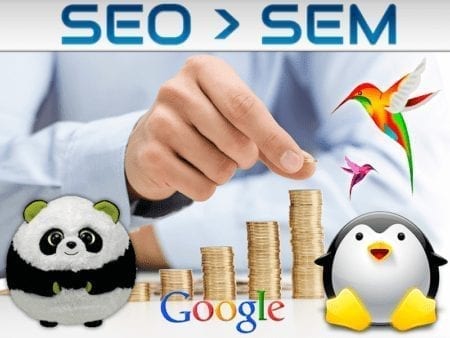 When Google releases an update to their algorithm, the rumors start flying. In May 2013, the rumor was that SEO was dead. The moment the name “Penguin 2.0,” now updated to 2.1, was mentioned, search engine optimization experts started panicking. When Google released Hummingbird, its most significant update in 12 years, websites started seeing their rankings change. At first, optimization specialists thought this would be the end of Search Engine Optimization, but what they found was that it is a new beginning.
When Google releases an update to their algorithm, the rumors start flying. In May 2013, the rumor was that SEO was dead. The moment the name “Penguin 2.0,” now updated to 2.1, was mentioned, search engine optimization experts started panicking. When Google released Hummingbird, its most significant update in 12 years, websites started seeing their rankings change. At first, optimization specialists thought this would be the end of Search Engine Optimization, but what they found was that it is a new beginning.
The new algorithm means no more blackhat tricks. Tricks like backlink image stuffing, comment spamming, keyword stuffing, and poor quality inbound links made for the purpose of trying to manipulate rankings are not going to work anymore. What the company is encouraging is for website owners to plug their websites with high quality and relevant content. Content promotes credibility and authorship, which improves rank. What this has done for the SEO specialist is convert them to Content Marketing specialists, making them more like Search Engine Marketing (SEM) professionals.
Search Engine Optimization vs. SEM
Search Engine Optimization and SEM have been used interchangeably throughout the years. This is, perhaps, because both will offer the same result and that is a better Google ranking. Now that Google has changed its algorithm, it is ideal to determine the difference between SEO and SEM.
SEO involves building pages in a way that allows them to rank high in search engine results. These results are “algorithmic” and they are based on the mathematical algorithm that the search engine uses to determine a page’s relevance for a particular keyword or keyword phrase.
Search Engine Marketing is typically related to paid advertising for sponsored links and keywords. Think more along the lines of Adwords and Facebook ads. However, the applications have extended way beyond just paid advertising. SEM is now being considered a more involved discipline with optimization elements. These elements include:
- Social Media Marketing – Facebook, Pinterest, Twitter, etc.
- Referral Marketing – Networking via online groups
- Email Marketing – Email newsletters, drip campaigns, brief updates, etc.
- Native Advertising – The ads look like content
- Content Marketing – eBooks, industry news, white papers, etc.
- Mobile Advertising – Text and picture messaging, apps, and game ads
- Affiliate Advertising – Having bloggers place your ads on their sites for a commission
- Search Optimized Navigation – Content is coded with hyperlinks for search engine spiders to follow
Adapting To Google’s New Ranking Methods
Google completely changed the ranking game by implanting such a major algorithm change. It can now recognize the meaning of a search string rather than just specific keywords. This has led to Google specifying new SEO guidelines that should be implemented into a website so it can better define where your site belongs. They are:
- The site structure and content
- Error pages, redirects, hosting, and JavaScript usage
- Keyword research and content development
- Expertise within the niche
- Business development campaign management
Google is utilizing a 200 point checklist when determining ranking. Exercising these best practices will help achieve the ideal result.
Follow Affordable SEO Tampa company on social media:
Facebook: https://www.facebook.com/AffordableSEOTampa
Twitter: https://twitter.com/affordableseofl
Google+: https://plus.google.com/+Affordableseofl
LinkedIn: http://www.linkedin.com/company/affordable-seo-tampa
